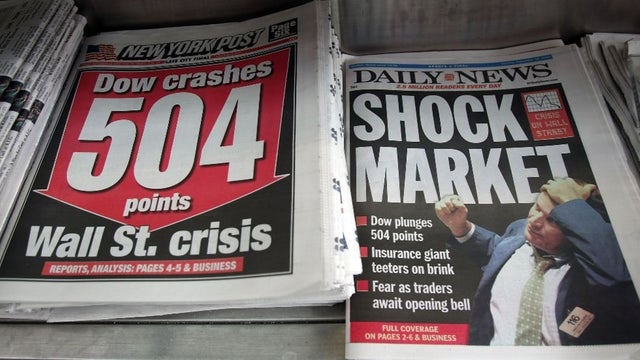Traditional banks borrow money and fail when they can’t repay. The result, as the Great Recession showed, is potential economic devastation requiring massive taxpayer bailouts. If the Great Recession taught us anything, it’s that our financial system needs to be redesigned from the ground up.
Enter narrow banking, the brainchild of some of our country’s greatest economists—Irving Fisher, Milton Friedman, and James Tobin. Narrow banks can’t do what President Franklin Delano Roosevelt decried—gamble with other people’s money. Narrow banks simply hold our money on deposit with the Federal Reserve. This guarantees it’s perfectly safe.
If we want to gamble (invest in higher yield, but risky securities) with our own money, we can use mutual funds. Mutual funds are, effectively, small banks that don’t borrow. They take in our money, hand us back ownership shares, and invest the proceeds. If the investments succeed, the value of our shares rise. If they fail, our shares fall. I.e., we, the people, decide what risks are worth taking. Since mutual funds don’t borrow, they can never go under.
With narrow banks for safe and mutual funds for risky investing – neither of which can fail – we’d never see another banking crisis. We’d have a new Limited Purpose Banking system, in which financial middlemen are limited to doing their job—keeping our money safe when we want to keep it safe and helping us invest at risk when we want to invest. Wall Street would no longer be able to destroy our economy, our jobs and our retirement savings by playing heads we win, tails you lose.
Narrow banks would also force Wall Street to pass on the interest they receive from the Fed to households in the form of higher deposit rates. Given the Fed’s mandate to protect the financial system and serve the public, the its decision in March to block narrow banking is passing strange.
Well, maybe not that strange. The Fed is, after all, a huge regulatory agency. Fixing the system once and for all would put most of its regulators out of business. Hopefully, moving to Limited Purpose Banking will become a major policy issue—one that both parties can endorse and force the Fed, via legislation, to support.
One reason politicians should jump on this is the immediate financial gain to voters from the Narrow Banking component of Limited Purpose Banking. Average depositors earn little or nothing at banks. Deposit accounts are the most widely held financial asset of U.S. households. The FDIC’s weekly national average interest rate for deposits this week shows that the national average interest rate on jumbo deposits, those in excess of $100,000, was 0.06 percent; in contrast, the Federal Reserve is paying banks 2.35 percent on their reserves.
The spread between the interest rate paid to banks on reserves and the average interest rate paid to banks, which, according to the FDIC’s weekly national average interest rates for deposits has increased from 0.21 percent on November 23, 2015, to 2.29 percent this week.
Why doesn’t competition force banks to pass on the Fed’s interest subsidy to depositors? The answer is the major cost of switching bank accounts. Research by the Fed’s own economists John Driscoll and Ruth Judson shows that when the Federal Reserve lowers wholesale money market rates, banks quickly reduce the rates they pay to depositors. But when the Fed raises wholesale rates, as it has in the last three and a half years, banks take months to increase the rates they offer depositors. Driscoll and Judson found that with well-functioning competition, “depositors would have received as much as $100 billion more in interest per year during periods when market rates were rising.”
Narrow banks would offer significant deposit rate competition to incumbent banks, starting with the largest depositors. Because narrow banks don’t offer deposit insurance, they are restricted to offer deposits to institutional investors. Nonetheless, ordinary Americans can benefit when large asset managers, who manage mutual funds, including 401(k) and similar retirement funds, pension funds and other assets, can earn higher deposit rates at narrow banks.
For example, competing cash mutual funds would arise and invest all their assets in narrow banks. This would quickly bid up the return paid on those funds to the rate the Fed is paying on reserves. Voters would also benefit from restricting financial middle men that invest at risk to do so solely within 100 percent equity-financed mutual funds. Our enormous banking regulatory bureaucracy, both federal and state, would be obsolete. It and its huge taxpayer-funded cost would go the way of the dinosaur.
A decade on, the real lesson of the Great Recession has yet to be learned. Trust-me banking wasn’t to be trusted in 2008. It’s not to be trusted today. Limited Purpose Banking, which has been endorsed by a who’s who of economists and former high-ranking policymakers, can fix our financial system once and for all. The Fed, if it were doing its job rather than protecting its turf, would do everything in its power to usher in Limited Purpose Banking, starting with the supporting, not blocking Narrow Banking.

0 Comments